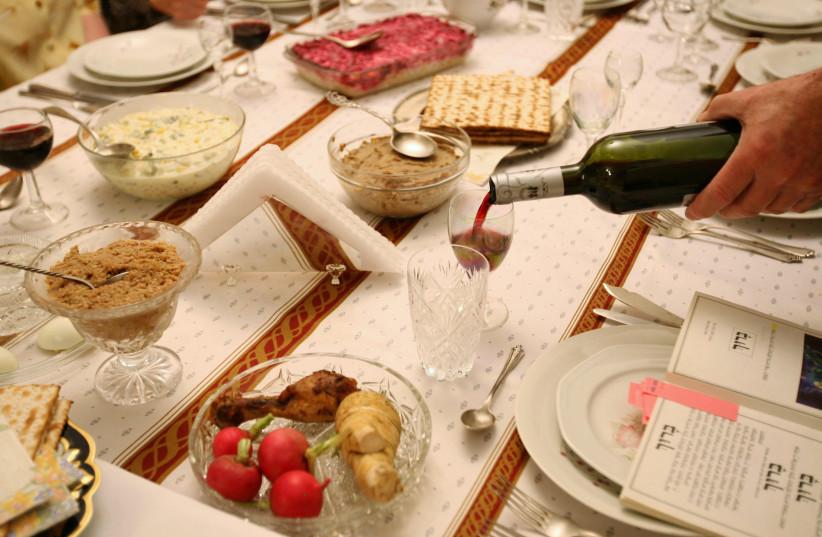There is one chore I enjoy every Passover, although I’ve never admitted it before. I join the housewives’ chorus of complaints about the endless cleaning, work-roughened hands and aching back. But secretly, there’s a part I relish.
I only fully realised it a few years ago. We had just done some refurbishing in our Jerusalem apartment and added a wall of beautiful cupboards in the kitchen. We were going to use them initially for my Passover dishes. Looking at my motley collection of 60 years, after I unpacked them and put them away, my late husband said: “We can afford to have full sets now, where everything matches. Give this lot to a charity shop or someone who needs them, and buy new sets of dishes, cutlery and glasses.”
At first I thought it was a wonderful idea, but slowly it started to hurt. When I contemplated giving away the dishes and glassware that I’d cherished and added to for half a century, I realized I couldn’t do it.
There are still five plates left from a set my sister-in-law Leah gave me for a wedding present in 1955. They are white, with a gold border and decorated with little bunches of blue forget-me-nots. Then there is a meat set, much diminished, with plates, sugar bowl, cups and saucers in deep blue with gold zig-zags. It is very opulent although the inside of the cups has become crazed with fine lines over the years. Our soup spoons are enormous... double the normal size... but they came to Australia with my husband’s family from Poland and were handmade. I use them as serving spoons, and like the feel of their solid weight in my hands.
The wine glasses are the most mismatched of all the glassware, having been added to as more children were born, married and our guest list increased. There are four tiny ones my mother gave our children as toddlers. I treasure them as my mother had very little money and whatever gifts she gave involved a real sacrifice. They have gold rims and bouquets of flowers painted on them in a rather lurid pink.

But, they were clutched in plump, dimpled fists by my toddlers at their first Seders, filled with grape juice, as they intoned “Mah nishtana...” much mispronounced, which they’d learned at kindergarten. And there is also a special fabric container that my husband used to hide the afikomen, that the kids always knew he hid behind the cushion. I’ll always keep that.
We seem to have accumulated dozens of Haggadot over the years, many dog-eared and wine-stained. Some of them were read by family and friends no longer with us. It seems sacrilegious to discard them.
So I could have had a Martha Stewart–style richly adorned Seder table, all new, all matching. At the time, I did plan to buy some lovely things, but they would sit alongside the dishes and cutlery from yesteryear. I wouldn’t exchange my motley collection for the most elegant settings in the world.
They are not just things. As I unpack and pack them each Passover, the memories come flooding back. These items have come with me from Australia to Israel and moved with me many times in Jerusalem until my much-loved permanent home in the suburb of Beit Hakerem. Now, since my husband passed on, I spend the Seder with my children and their families, but when I am gone, I think my children will want them, because every Passover one of them always said, “Oh, I remember this!”
Perhaps I am a hopeless sentimentalist, but every piece in my Passover cupboard brings back memories of times past, when I was young, when my children were young, when my husband was alive, when so many people I loved were still alive and sitting at our Seder table.
Some things with no monetary value nevertheless always remain precious, if they have been cherished. ■
The writer is the author of 14 books. Her latest novel is Searching for Sarah.
